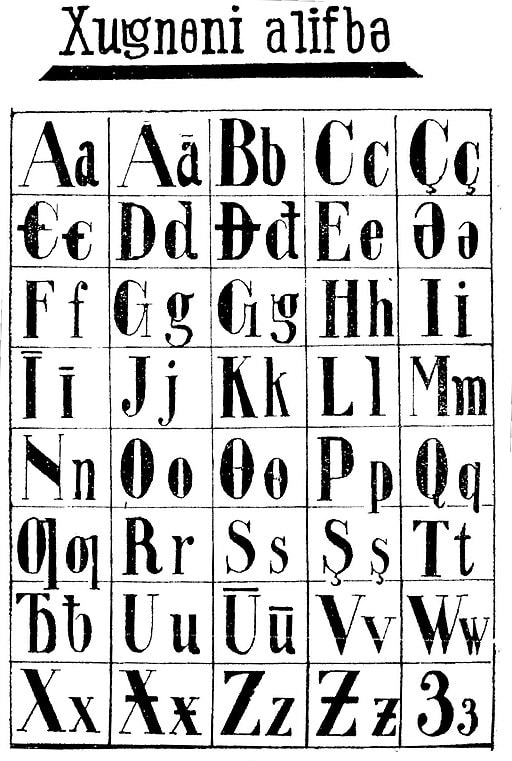Shugni Develops a Written Form [1930-31]

The Shugnis are one of the largest groups of Pamiri peoples in Tajikistan who speak the Shugni language, a variant of the Pamir language group with over 35,000 speakers in Tajikistan [Omniglot, n.d.]. They live on the border between Tajikistan and Afghanistan and were largely isolated and ignored by academics until the 1870s [Kolga, 2001]. During the twentieth century, the Shugni and other Pamir peoples gained the interest of Soviet researchers, leading to the creation of the first Shugni script between 1930 and 1931. This script used the Latin alphabet (rather than the Cyrillic that would be adapted in 1938) and replaced earlier attempts at a written form of Shugni that used the Arabic alphabet [Omniglot, n.d.]. Initially, this Latinized version of Shugni was published in textbooks and teaching guides meant to educate local populations, but this initiative only lasted several years. Russian researchers believed that educational materials crafted specifically for the Shugni would distract from a unified education system in Tajikistan, and that it would be more desirable to replace Pamir languages with Russian in schools [Kolga, 2001]. The Pamir languages were viewed as an obsolete language system that was too small and disparate to be linguistically dominant and could be replaced by Russian during the Soviet regime. Shugni persisted however as it was one of the more prominent Pamir languages and was thus often used as a means of communication between different Pamiri peoples [Kolga, 2001]. As a result, a written form of Shugni using the Cyrillic alphabet survived and is still in use while Shugni is still spoken in the Pamir Mountains today. Despite having been replaced by the Cyrillic version, the 1930-31 version of Shugni remains important as it represents efforts to ensure the survival of the Shugni language as a primary means of communication among the Pamiris [Kolga, 2001].